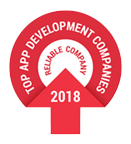Cost-Benefit Analysis: Ensuring Positive ROI with Strategic IoT Deployment

Surely, the promise of enhancing operational productivity, making data-driven decisions, and elevating customer experiences has led to a boom in IoT adoption. However, while the potential benefits are clear, the road to successfully implementing IoT solutions is filled with several challenges, one of them being the financial aspect. This is where cost-benefit analysis steps in.
Think of cost-benefit analysis as a compass. The one that guides organizations through the complex landscape of IoT deployment. Plus it serves as the strategic blueprint for ensuring a positive Return on Investment – ROI – and validating the wisdom of IoT integration. If you’ve been looking to explore the pivotal role of CBA in the world of IoT, then you’re in the right place.
Familiarizing With The Basics: Understanding IoT Deployment
Unlocking the full potential of the Internet of Things is synonymous to discovering a hidden treasure trove in the vast landscape of the digital world. Imagine your business operations streamlined, decision-making empowered by real-time data, and your customers immersed in seamless, personalized experiences – this is the promise of Strategic IoT Deployment.
The real agenda behind IoT is to support the interconnection of everyday objects, devices, and systems via the internet, revolutionizing how we work, live, and play. Now coming to strategic IoT deployment, it refers to the deliberate and well-planned implementation of IoT to achieve specific organizational objectives and goals. Moreover, it involves the systematic integration of IoT devices, sensors, and data analytics into existing infrastructure, ensuring that it aligns with a company’s broader strategic vision.
The Underlying Nuances
This process behind strategic IoT deployment begins with developing a clear understanding of the desired outcomes. From optimizing recurring operations to enhancing customer experiences, and improving decision-making, it could be anything. A strategic IoT deployment involves selecting the right IoT devices, network architecture, and data management systems, while also considering cybersecurity and scalability.
Additionally, it requires continuous monitoring and adaptation to ensure that the IoT deployment remains aligned with the evolving needs of the organization. Remember, successful strategic IoT deployment can lead to increased efficiency, cost savings, data-driven insights, and a competitive advantage in a rapidly evolving digital landscape.
What Benefits Unfurl With a Successful Strategic IoT Deployment?
Strategic IoT deployment offers a multitude of benefits across various sectors. It truly is a transformative force in the modern business landscape. Without any ado, let’s delve right into some key advantages of leveraging IoT strategically:
Optimal Operational Efficiency
IoT enables real-time monitoring and automation of processes, reducing human intervention and minimizing errors. This leads to increased efficiency, lower operational costs, and improved resource allocation.
Better Decision-Making
With a wealth of data at your fingertips, IoT empowers data-driven decision-making. It provides insights into consumer behavior, equipment performance, and supply chain dynamics, enabling businesses to make informed and timely choices.
Enhanced Customer Experience
IoT allows for personalization and real-time responsiveness. Whether in retail, healthcare, or hospitality, it enables businesses to tailor products and services to individual customer preferences, leading to higher satisfaction and loyalty.
Scaled Growth Opportunities
IoT can open up new revenue streams. By offering subscription-based services, predictive maintenance, or innovative product features, businesses can tap into additional sources of income, driving growth.
Energy Savings
IoT systems can optimize energy usage in buildings and industrial settings. Sensors and controllers adjust lighting, heating, and cooling based on occupancy and environmental conditions, resulting in significant energy savings and a reduced carbon footprint.
Supply Chain Optimization
In logistics and supply chain management, IoT helps in tracking goods, monitoring conditions (temperature, humidity), and predicting potential disruptions. This reduces wastage, improves delivery times & product quality and enhances overall supply chain efficiency.
Healthcare Advancements
In the healthcare sector, IoT enables remote patient monitoring, which not only improves patient care but also reduces hospital readmissions, ultimately lowering healthcare costs.
Safety & Security
IoT systems enhance safety and security through features like surveillance cameras, access control systems, and environmental monitoring. This is particularly vital in critical infrastructure and smart cities.
Environmental Sustainability
IoT contributes to sustainability by enabling the monitoring and control of environmental factors, waste reduction, and the conservation of resources, aligning businesses with eco-friendly practices.
Competitive Advantage
Early adoption of IoT can provide a competitive edge. Businesses that strategically integrate IoT can differentiate themselves from competitors and adapt to changing market demands more effectively.
So, to conclude this section, strategic IoT deployment has the power to revolutionize industries through an array of benefits. By adopting the potential of IoT, businesses can get on the fast track to success in this rapidly evolving digital landscape.
What To Keep in Mind While Deploying IoT?
Although the deployment of IoT solutions is an exciting journey, however, amidst the innovation, being cost-conscious and ROI-focused is the key. Abiding by the following principles ensures businesses that their IoT deployment remains not only innovative but also financially prudent.
Clear Objectives
Define your goals before embarking on the IoT adventure. This approach will allow your investments to stay fully aligned with your strategic vision.
Cost Allocation
Break down your IoT expenses to get a full understanding where every investment has gone. From hardware and software to ongoing maintenance, transparency is key.
ROI Projections
Conduct thorough ROI projections by taking all short-term and long-term gains into account. Factor in potential risks and uncertainties in your calculations.
Regular Evaluation
Make sure to regularly assess the relevance and performance of your IoT applications, ensuring they continue to deliver value.
Scalability
Plan ahead for growth. Ensure your IoT infrastructure is scalable to accommodate future needs without incurring exorbitant costs.
Security Investment
Don’t cut corners on security measures. A data breach or system failure can lead to devastating financial implications.
Expert Guidance
Consider consulting with experts who can help you navigate the complex world of CBA, especially if it’s not your core competency.
Data Monetization
Explore ways to monetize the data generated by your IoT devices, potentially creating new revenue streams.
Flexibility
Be prepared to adapt and adjust your IoT strategy as the market and technology evolve. Rigidity is a money-drainer.
Benchmarking
Continuously benchmark your IoT performance against industry standards and competitors to ensure you’re on the right financial track.
Conducting a Cost-Benefit Analysis: The More You Know
Carrying out a radical cost-benefit analysis is no typical rocket science. Any business can conduct it, as long as they remember to abide by the following principles.
Identify Costs
List all costs involved, including initial expenses, operational costs, and maintenance.
Quantify Benefits
Determine the anticipated benefits such as increased revenue, cost savings, or efficiency gains.
Time Horizon
Establish a timeframe for the analysis and apply discount rates for future cash flows.
Sensitivity Analysis
Assess potential risks and uncertainties that might affect costs or benefits.
Calculate the Financial Viability
Evaluate the financial viability – Net Present Value (NPV) and Return on Investment (ROI) – of the project.
Compare Alternatives
If applicable, compare different investment options to select the most favorable one.
Make Intelligent Decisions
Use the CBA results to make data-driven decisions, weighing costs against benefits for sound financial planning.
Maximizing ROI through Strategic IoT Deployment – A Recap
In the dynamic realm of business, Strategic IoT Deployment is not just about connecting devices; it’s about connecting the dots between innovation and financial success.
By embracing the transformative power of IoT and understanding how to navigate the intricate landscape of Cost-Benefit Analysis, businesses can unlock a new era of efficiency, growth, and sustainability. All in all, those who master the art of maximizing ROI through Strategic IoT Deployment will undoubtedly lead the charge into a prosperous and digitally empowered future.















